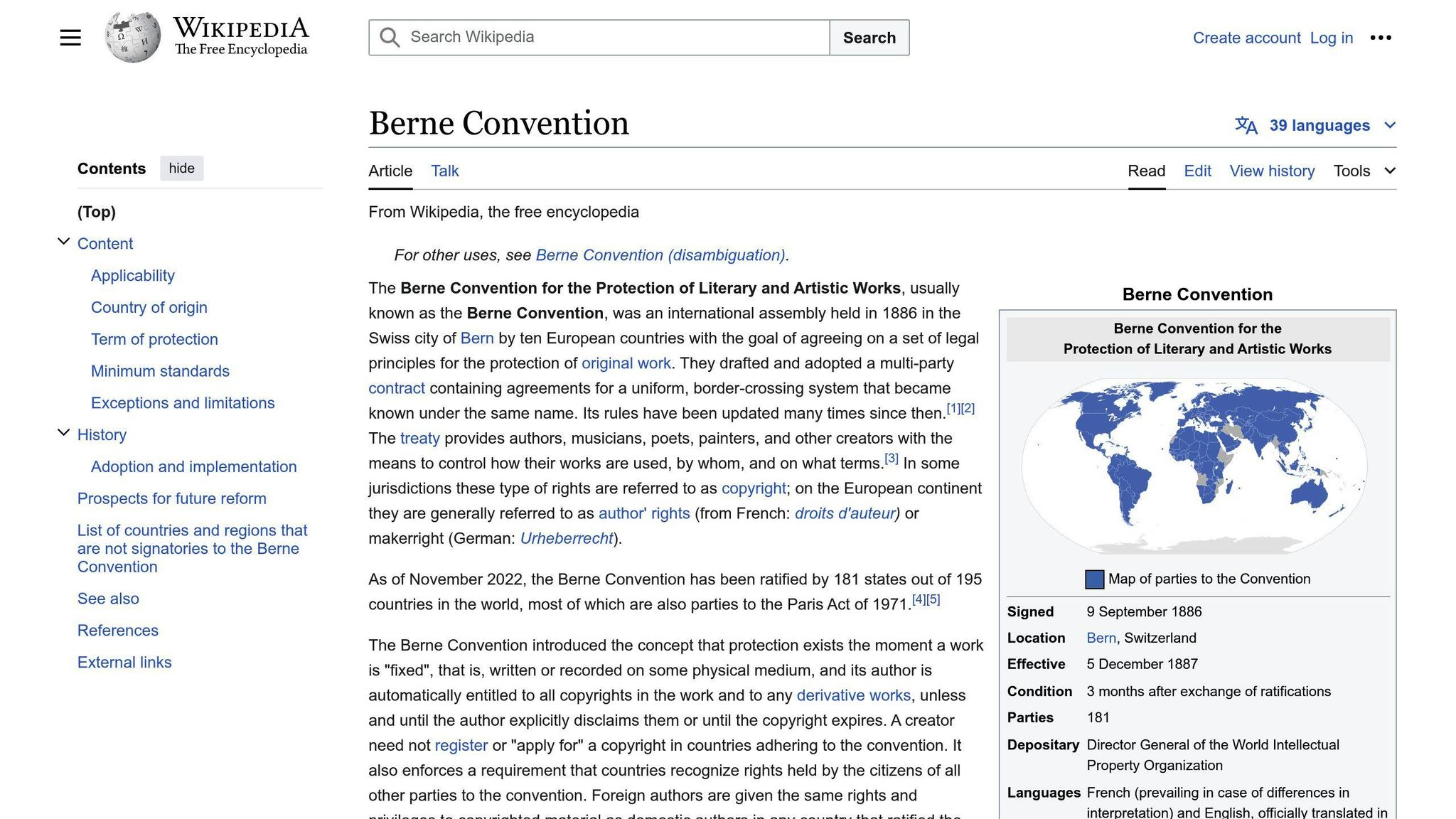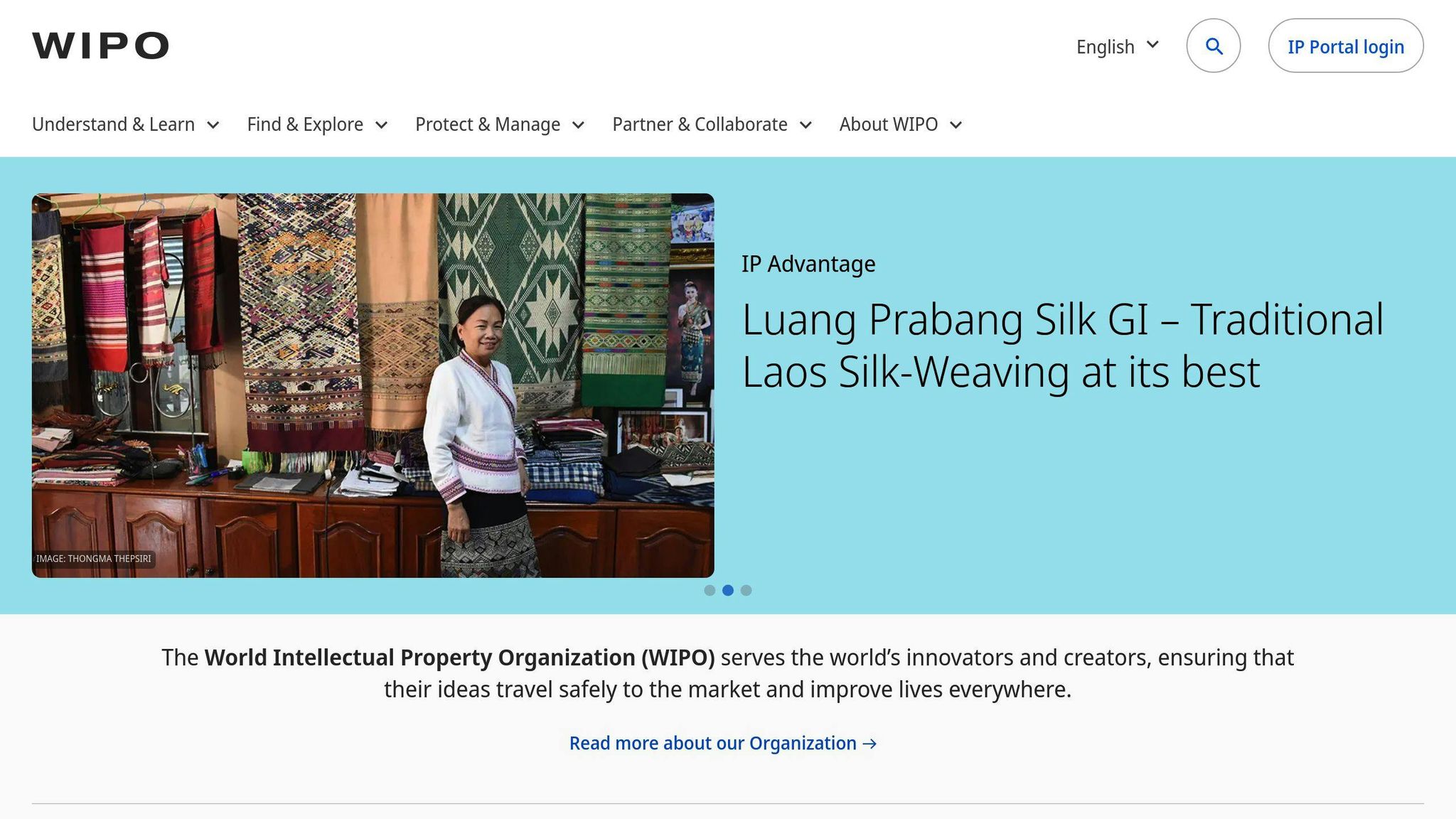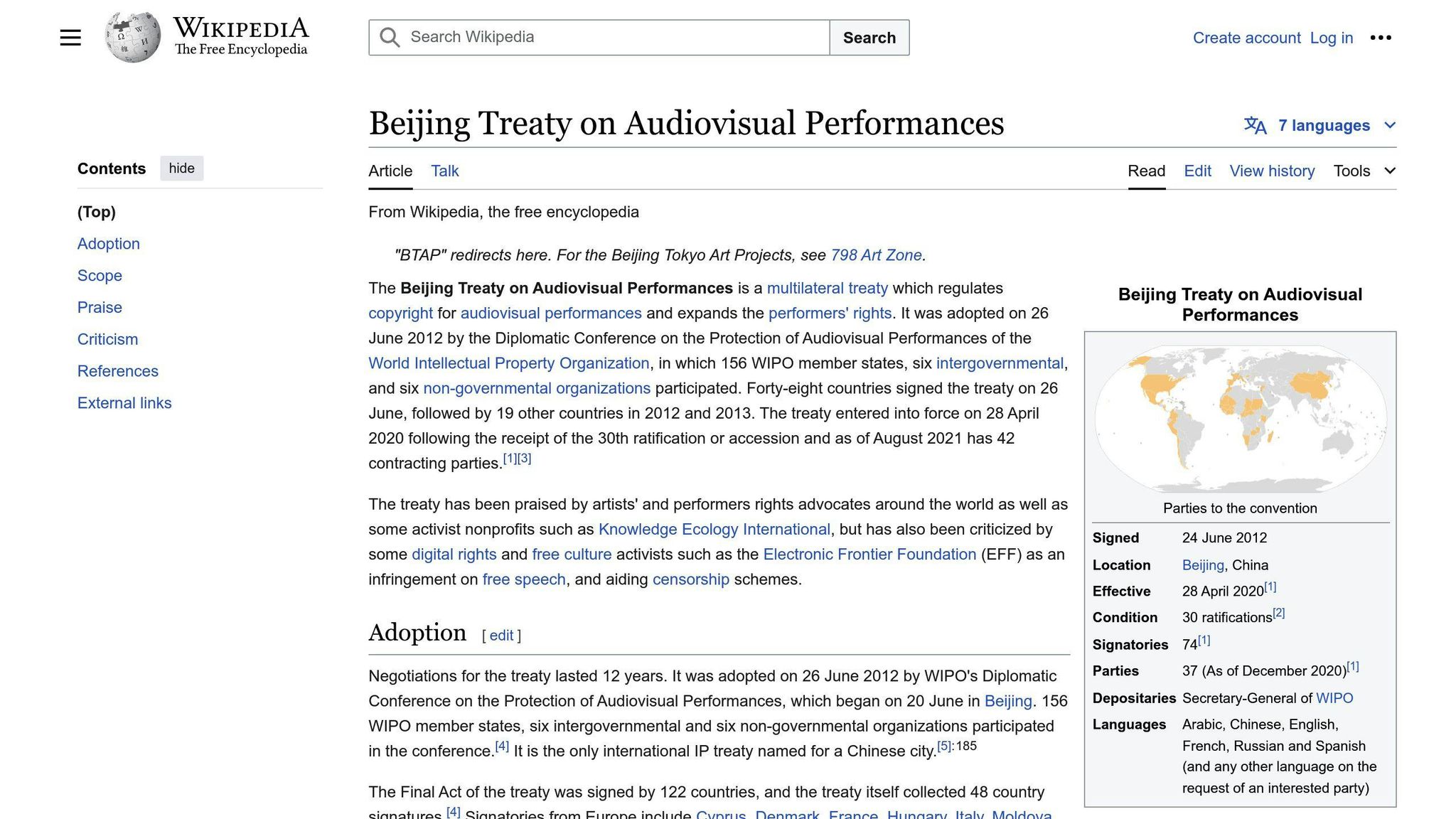The digital age has revolutionized how we create, share, and access content globally. To protect creators’ rights and ensure fair compensation, several international copyright treaties have been established. If you’re an Enterprise, then we recommend to book a call with us for the best solutions to protect your business:
- Sets minimum standards for copyright protection
- Grants protection automatically without registration
- Covers literary, artistic, and musical works for at least 50 years after author’s death
WIPO Copyright Treaty (WCT)
- Deals with digital rights management and technological protection measures
- Grants authors economic rights like distribution, rental, and communication to the public
- Covers computer programs and databases
Universal Copyright Convention (UCC)
- Provides flexible copyright protection alternative to Berne Convention
- Minimum term: Life of author + 25 years (or 10 years for photographs/applied art)
- Grants exclusive 7-year translation right
WIPO Performances and Phonograms Treaty (WPPT)
- Grants economic rights to performers and producers of sound recordings
- Covers performers’ rights in their recorded performances
- Covers producers’ rights in phonograms (sound recordings)
Beijing Treaty on Audiovisual Performances
- Grants performers economic rights for audiovisual performances
- Covers rights like reproduction, distribution, rental, and making available
- Grants moral rights like being identified and objecting to modifications
These treaties aim to harmonize copyright laws, facilitate cross-border protection, and adapt to evolving digital landscapes, ultimately safeguarding creators’ rights globally.
1. Berne Convention for the Protection of Literary and Artistic Works

The Berne Convention is an international treaty that sets basic standards for copyright protection. Established in 1886, it has been updated several times to keep up with new technologies and artistic expressions. Today, it has 181 member countries, making it one of the most widely adopted international copyright agreements.
Key Principles
The Berne Convention is based on three main principles:
- National Treatment: Member countries must give foreign authors the same copyright protection as their own nationals.
- Automatic Protection: Copyright protection is automatic and does not require formal registration or other formalities.
- Independence of Protection: Protection is independent of the existence of protection in the country of origin of the work.
Minimum Standards
The convention sets basic standards for copyright protection, including:
| Protected Works | Minimum Copyright Term | Moral Rights |
|---|---|---|
| Literary, artistic, and musical works | 50 years after the author’s death | Right to claim authorship, object to distortions or modifications |
The Berne Convention has played a crucial role in establishing a global framework for copyright protection, facilitating international cooperation, and promoting creativity and innovation.
2. WIPO Copyright Treaty (WCT)

The WIPO Copyright Treaty (WCT) is a special agreement under the Berne Convention that deals with the protection of works and the rights of their authors in the digital environment. It was adopted in 1996 and has 115 contracting parties as of August 2023.
Key Provisions
The WCT grants authors certain economic rights, including:
- Right of Distribution: The right to control the distribution of their work.
- Right of Rental: The right to control the rental of their work.
- Right of Communication to the Public: The right to control the communication of their work to the public.
The WCT also covers two subject matters to be protected by copyright:
| Subject Matter | Description |
|---|---|
| Computer Programs | Whatever the mode or form of their expression |
| Compilations of Data or Other Material ("Databases") | In any form, which by reason of the selection or arrangement of their contents constitute intellectual creations |
Technological Measures
The WCT prohibits the circumvention of technological measures used by authors to protect their works, such as:
- Encryption: A method of protecting works by converting them into a code.
- Rights Management Information: Data that identify works or their authors and are necessary for the management of their rights.
Importance
The WCT is important in the digital age, as it provides a framework for countries to protect the rights of authors in the face of new technologies and online platforms. By joining the WCT, countries commit to providing a certain level of copyright protection, which helps to ensure that authors are fairly compensated for their work and that their rights are respected.
3. Universal Copyright Convention (UCC)
The Universal Copyright Convention (UCC) is an international agreement created in 1952 under the auspices of UNESCO. It aimed to bridge the legal gap between the United States and countries that were part of the Berne Convention for the protection of literary and artistic works.
Key Features
The UCC provides a simple solution to the problem of copyright protection between countries with different legal systems. It requires that all copies of a work originating in another contracting state carry the symbol ©, accompanied by the name of the copyright owner and the year of first publication.
Minimum Copyright Term
The UCC grants a minimum term of copyright of the life of the author plus 25 years, except for:
| Work Type | Term |
|---|---|
| Photographic works and works of applied art | 10 years |
Exclusive Right of Translation
The UCC grants an exclusive right of translation for a seven-year period, subject to a compulsory license under certain circumstances for the balance of the term of copyright.
Importance
The UCC is important as it provides a flexible alternative to the Berne Convention, accommodating countries at different stages of development and with different economic and social systems. Although it has decreased in importance as most countries are now party to the Berne Convention or are members of the WTO (or both), it remains a significant international copyright treaty.
sbb-itb-738ac1e
4. WIPO Performances and Phonograms Treaty (WPPT)
The WIPO Performances and Phonograms Treaty (WPPT) is an international agreement that supplements the Berne Convention and the Rome Convention. It was signed by member states of the World Intellectual Property Organization (WIPO) on December 20, 1996.
Key Features
The WPPT grants economic rights to performers and producers of sound recordings. It also gives performers moral rights over their performances.
The treaty covers two main areas:
| Area | Description |
|---|---|
| Performers’ Rights | Economic and moral rights in their performances fixed in phonograms |
| Producers’ Rights | Economic rights in phonograms |
Importance
The WPPT is important because it updates WIPO copyright treaties and regulations to accommodate new markets, distribution methods, and types of works. It ensures that performers and producers of phonograms have adequate protection and remuneration for their work in the digital age.
By providing a framework for the protection of performances and phonograms, the WPPT promotes creativity, innovation, and cultural diversity. It also fosters international cooperation and sets a common standard for the protection of intellectual property rights in the music industry.
5. Beijing Treaty on Audiovisual Performances

The Beijing Treaty on Audiovisual Performances is an international agreement that regulates copyright for audiovisual performances and expands the rights of performers. Adopted on June 26, 2012, by the Diplomatic Conference on the Protection of Audiovisual Performances of the World Intellectual Property Organization (WIPO), the treaty entered into force on April 28, 2020.
Key Features
The Beijing Treaty grants performers economic rights for their performances fixed in audiovisual fixations, including:
- Reproduction: The right to control the reproduction of their performances.
- Distribution: The right to control the distribution of their performances.
- Rental: The right to control the rental of their performances.
- Making available: The right to control the making available of their performances.
For live performances, performers have the rights of:
- Broadcasting: The right to control the broadcasting of their performances.
- Communication to the public: The right to control the communication of their performances to the public.
- Fixation: The right to control the fixation of their performances.
The treaty also grants performers moral rights, including:
- Right to be identified: The right to be identified as the performer.
- Right to object: The right to object to any distortion, mutilation, or other modification prejudicial to the performer’s reputation.
These new rights must last at least 50 years in member countries and must be automatic and not subject to formalities such as registration or the use of a copyright symbol or notice.
Importance
The Beijing Treaty is significant because it provides legal protection to performers in audiovisual works, such as actors in motion pictures, and acknowledges their right to decide the time and manner in which their audiovisual works are used abroad. It also ensures that performers receive a share of the profits obtained from their exploitation, even in the digital environment.
Conclusion
In conclusion, understanding the five international copyright treaties discussed in this article is crucial for content creators, businesses, and legal professionals operating in the global copyright landscape. These treaties provide a framework for protecting intellectual property and copyrights across international borders.
Why are these treaties important?
These treaties play a vital role in promoting creativity, innovation, and cultural exchange by providing a legal framework that encourages the creation and dissemination of creative works. By understanding the provisions and implications of these treaties, content creators and businesses can:
- Navigate the complexities of copyright laws and regulations
- Comply with the necessary requirements to protect their creative works
- Take advantage of the opportunities offered by the global digital market
- Protect their intellectual property rights
Key takeaways
The five international copyright treaties discussed in this article are:
| Treaty | Description |
|---|---|
| Berne Convention | Sets basic standards for copyright protection |
| WIPO Copyright Treaty (WCT) | Deals with the protection of works and the rights of their authors in the digital environment |
| Universal Copyright Convention (UCC) | Provides a simple solution to the problem of copyright protection between countries with different legal systems |
| WIPO Performances and Phonograms Treaty (WPPT) | Grants economic rights to performers and producers of sound recordings |
| Beijing Treaty on Audiovisual Performances | Regulates copyright for audiovisual performances and expands the rights of performers |
By recognizing the importance of these treaties, individuals and organizations can ensure that they comply with the necessary requirements to protect their creative works and take advantage of the opportunities offered by the global digital market.
FAQs
What are the treaties on copyright protection?
The Berne Convention sets a minimum standard for copyright protection among its member countries. It requires protection for all creative works in a fixed medium to be automatic and last for at least 50 years after the author’s death.
Which treaty covers copyrights?
The Berne Convention is the main treaty that protects literary and artistic works. It establishes minimum standards and reciprocal recognition and enforcement of copyright protection.
Here is a summary of the key points:
| Treaty | Description |
|---|---|
| Berne Convention | Sets minimum standards for copyright protection among member countries |
| Protects literary and artistic works |

